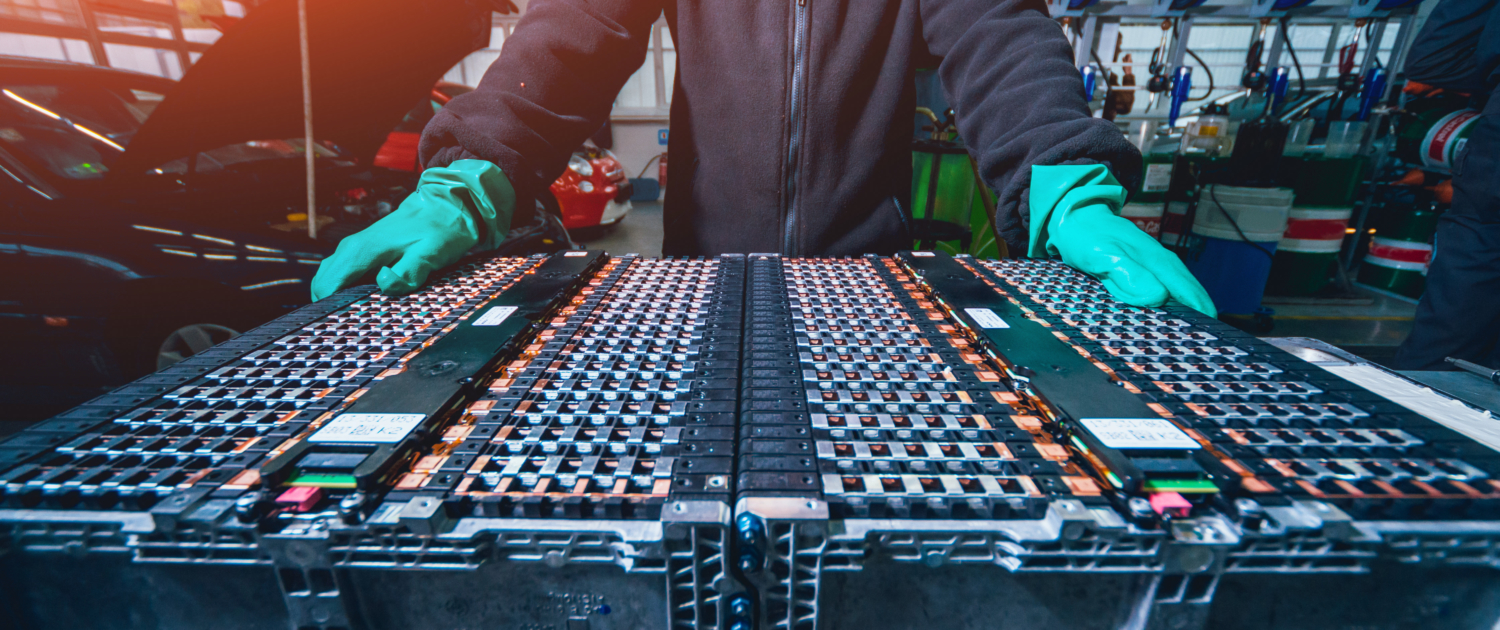Where do the raw materials for e-car batteries come from? Does it have enough of them? What happens when an e-car battery has reached the end of its life? What is the situation with regard to recycling? In a basic document, the Swiss Federal Office of Energy (SFOE) has compiled everything worth knowing about batteries for electric vehicles - from raw material extraction to disposal. Alois Freidhof from the Mobility Section at the SFOE explains in an interview, among other things, what is intended by this and what insights the information provides.
Energeiaplus: A good 70 pages of information just about batteries for electric vehicles. What was the motivation for this work?
Alois Freidhof: The batteries are the most important, most expensive, but also most critical components of an electric car. There is a lot of contradictory information and statements circulating in the media about batteries for e-cars. This leads to myths and false assessments among the population. With this basic document, we would like to correct "fake news" and enable discussions based on factual information.
An important issue with batteries for electric vehicles is the raw materials. One can find information on the origin of cobalt, nickel or lithium and co. or on the extraction. Social and ecological aspects of raw material extraction are also addressed. Why?
We want to educate people. This also includes the critical aspects of e-car batteries. For example, the negative ecological and social effects of extracting the raw materials. We must be aware that e-cars will not eliminate all environmental and social problems. Of course, this applies to many technologies in our lives today that require raw materials. However, we also want to use the report to show where the journey could go in terms of the critical points and that the potential for improvement is certainly large and also realistic. Key words: battery passport and recycling quotas, which the EU wants to introduce, or the planned supply chain law.
One chapter is devoted to the production of battery cells. Three quarters of the cells currently come from China. But an outlook is also made. How reliable are the prospects of Europe catching up in battery production?
The report is based on a wide range of reliable sources. They all come to a similar conclusion, namely that production in Europe will be expanded. Many of the projects and partnerships are already very concrete. There is also political will in Europe. Naturally, a quantitative forecast for production capacity in ten years' time is subject to uncertainty, as changing political conditions and the price dynamics of raw materials will continue to play a role in investment decisions.
Other issues: Battery life and end-of-life issues. Is there any reliable information on these aspects at all yet? Most e-cars have not yet reached the end of their useful life.
There are already a great many studies and, of course, real long-term tests with vehicles that have already covered more than a million kilometers on electric power. Intensive research is also being carried out in many places on new technologies and on understanding the aging processes, including in Switzerland, for example at the Energy Storage Research Centre of the Bern University of Applied Sciences. The aging processes and their influencing factors are therefore already well researched. However, due to the large number of different battery technologies, the constant further development and the different usage, a general prediction for each individual battery is difficult. In principle, however, it can be said that the service life is usually longer than the typical service life of a car within Switzerland.
The information was gathered from existing sources. Studies, reports, etc. There is a risk that this information will soon be outdated. What do you say to this?
That is correct. The market and technologies for batteries are very dynamic. Raw material prices depend on capacities and demand and political framework conditions. Intensive research is being done on technologies for production, operation and recycling. Likewise on alternative compositions of materials for batteries. We will follow these developments. If the document no longer adequately reflects the state of the facts, we will revise it. We expect this to be the case for the first time in 2-3 years.
Who do you want to address with this compilation on e-car batteries? Who should find this document useful?
We see the document as a reference work - for people in the industry but also for potential car buyers or media representatives or politicians - in fact for everyone. The various topic blocks stand on their own, so they do not build on each other.
For a quicker overview, a 13-page factsheet with many illustrations was also created. The report is also intended to serve as a basis for future federal publications. Relevant statements are also listed on the website fahr-mit-dem-strom.ch.
One question in conclusion: Is a battery-powered car always the more ecological choice compared to a gasoline- or diesel-powered car? What conclusion do you come to?
The most critical component of an e-car is the battery - in terms of environmental impact. When comparing with a combustion engine, it is important to compare cars of the same category. An average mid-range car with an electric range of about 400 km, powered by Swiss electricity, has emitted about half as much climate-damaging gases as a comparable diesel or gasoline car after a total lifetime of 200,000 km. Within the range of e-cars, however, there are major differences in terms of environmental impact due to the size of the vehicle, size and type of battery, driving performance and driving behavior, and the source of electricity for the battery charges.
In simple terms, the larger the battery of an electric car, the greater the environmental impact per kilometer driven. By choosing the car model (especially weight) and the size of the battery, users have a strong influence on the environmental impact of their vehicle. When making a purchase decision, it is therefore important to choose the battery size that best suits individual use. The report provides valuable information and recommendations on how to extend battery life through appropriate behavior.
Interview: Brigitte Mader, Communication, Swiss Federal Office of Energy



 5 Vote(s), Durchschnitt: 3,80
5 Vote(s), Durchschnitt: 3,80 shutterstockClean Fleet: Silber, Gold oder Platin für eine umweltfreundliche Fahrzeugflotte
shutterstockClean Fleet: Silber, Gold oder Platin für eine umweltfreundliche Fahrzeugflotte  BFEBFE-Umfrage: Mehrheit fordert raschere Bewilligungsverfahren und rechnet mit grossen Veränderungen im Schweizer Strommarkt
BFEBFE-Umfrage: Mehrheit fordert raschere Bewilligungsverfahren und rechnet mit grossen Veränderungen im Schweizer Strommarkt  EnergeoUne campagne de prospection géothermique fructueuse sur La Côte
EnergeoUne campagne de prospection géothermique fructueuse sur La Côte  BFEZukunftstag 2024: Schülerinnen und Schüler entdecken die UVEK-Ämter
BFEZukunftstag 2024: Schülerinnen und Schüler entdecken die UVEK-Ämter 
 ©Shutterstock
©Shutterstock Kanton Solothurn
Kanton Solothurn
Neuste Kommentare